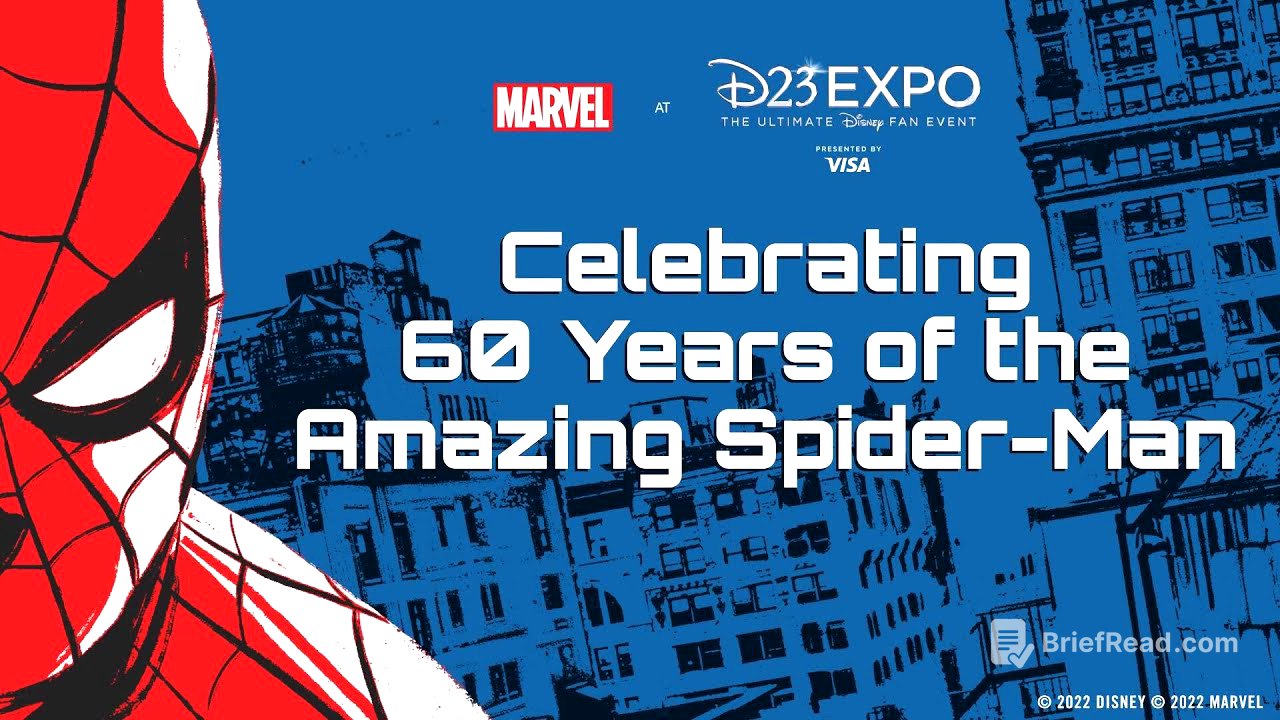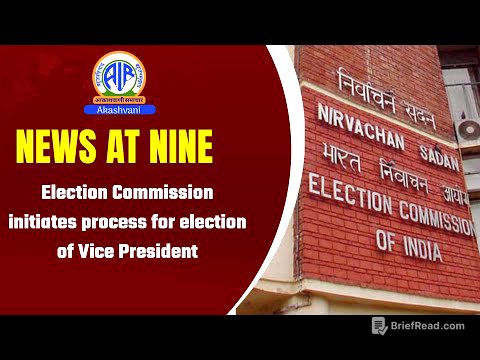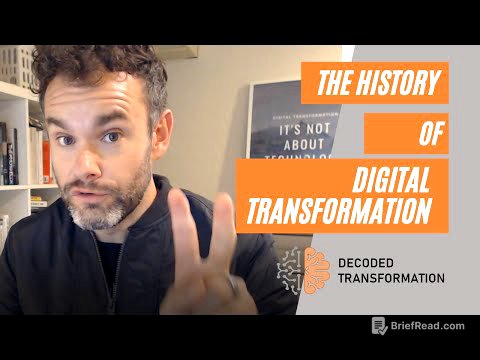TLDR;
This YouTube video is a panel discussion celebrating 60 years of Spider-Man comics at D23, featuring Marvel's Editor-in-Chief C.B. Cebulski and Executive Spider-Editor Nick Lowe. The panel explores Spider-Man's origin, key creators like Stan Lee and Steve Ditko, iconic storylines, and the character's expansion into various media. The discussion also touches on future comic plans and exclusive giveaways for the audience.
- Origin and Evolution of Spider-Man
- Key Creators and Storylines
- Expansion into Media and Future Plans
Introduction and Audience Engagement [0:02]
The panel begins with C.B. Cebulski and Nick Lowe greeting the audience at D23 and testing their Spider-Man knowledge with trivia. They discuss how people first encountered Spider-Man, whether through comics, animated series, movies, or other media. Cebulski shares his first experience with Spider-Man was through comic books, while Lowe's was through the 90s animated series.
60 Years of Spider-Man: A Trailer and Trivia [0:20]
A trailer showcasing Spider-Man's history is played. Following the trailer, a trivia question is posed: Spider-Man's first appearance was in Amazing Fantasy #15, published on June 5th, 1962. The cover was by Jack Kirby, after Stan Lee wasn't thrilled with Steve Ditko's cover. Context is provided by comparing the comic's price (12 cents) to other costs of the time, like gasoline and college tuition.
The Creators: Stan Lee and Steve Ditko [6:29]
The panel discusses the creative team behind Spider-Man, Stan Lee and Steve Ditko, emphasizing that neither could have created the character alone. Stan felt Steve's quirky style was perfect for the less realistic elements of Spider-Man. The publisher was initially hesitant about a teenaged superhero.
Urban Legends and Early Spider-Man Comics [12:17]
An urban legend is debunked: it wasn't a one-shot deal. Letters in Amazing Fantasy #15 mention Spider-Man as a continuing feature. Early issues of Amazing Spider-Man contained two stories, indicating plans for Amazing Fantasy to continue. The initial comics saw the creation of iconic villains, and the characters aged in real-time.
Iconic Villains and the Sinister Six [14:39]
The discussion shifts to the creation of iconic villains like Doc Ock, Electro, and Vulture, leading to the formation of the Sinister Six in Amazing Spider-Man Annual #1. The annual is highlighted for its splash pages for each villain.
High School Graduation and College Years [16:06]
Peter Parker graduates high school in Amazing Spider-Man #28 and goes to college in issue #31, where he meets Gwen Stacy and Harry Osborne. Steve Ditko's departure after issue #38 leads to John Romita Sr. taking over as the artist.
John Romita Sr. and the Introduction of Mary Jane [18:07]
John Romita Sr.'s art style is discussed, noting how he made Peter Parker more handsome and Gwen Stacy more beautiful. Mary Jane Watson is introduced, with her iconic line, "Face it, tiger, you just hit the jackpot." Romita's ability to draw both attractive and villainous characters, like the Kingpin, is highlighted.
Spider-Man Expands Beyond Comics [22:46]
Stan Lee's role evolved to expand the Marvel brand into Hollywood, leading to the original Spider-Man cartoon series. The panel acknowledges the show's classic theme song and animation.
Real-World Issues and Captain Stacy's Death [25:04]
The discussion touches on how Spider-Man comics addressed real-world issues like drug use, with Harry Osborne's storyline. Captain Stacy's death in Amazing Spider-Man #90 is discussed, where he reveals he knew Peter was Spider-Man.
Gwen Stacy's Death and the Rise of Multiple Titles [27:36]
Jerry Conway takes over writing duties and introduces Gwen Stacy's death, one of the most tragic events in Marvel history. The panel clarifies that Stan Lee was aware and approved of the storyline. The location of Gwen's death is debated, with the comic naming the George Washington Bridge but Gil Kane drawing the Brooklyn Bridge. The popularity of Spider-Man leads to multiple titles, including Marvel Team-Up and Peter Parker, the Spectacular Spider-Man.
Spider-Man in Television and International Appeal [31:56]
The live-action television series with Nicholas Hammond and the Spider-Man newspaper strip are discussed. Spider-Man's international appeal is highlighted, including the Japanese Sentai series with a giant robot, Leopardon.
Emotional Storytelling and Costume Changes [35:31]
The emotional impact of "The Kid Who Collects Spider-Man" is discussed, emphasizing its focus on a child with cancer. Spider-Man's black costume from Secret Wars is mentioned, leading to the creation of Venom.
Venom, Marriage, and Craven's Last Hunt [38:04]
The creation of Venom and his popularity are discussed, along with the marriage of Peter Parker and Mary Jane Watson, which was celebrated in both the comics and real life. Craven's Last Hunt is highlighted as one of the greatest Spider-Man stories.
The 90s: McFarlane, Larson, Bagley, and the Clone Saga [42:26]
The defining creators of Spider-Man in the 90s, including Todd McFarlane, Erik Larsen, and Mark Bagley, are celebrated. Todd McFarlane's Spider-Man series is noted for selling 2.5 million copies. The Clone Saga and the introduction of Ben Reilly are discussed.
Ultimate Spider-Man and the Movies [46:48]
The introduction of Ultimate Spider-Man is discussed as a way to make the comics more accessible to new readers. The Sam Raimi Spider-Man movies and subsequent film series are credited with making Spider-Man a global cultural phenomenon.
Modern Spider-Man and Controversial Storylines [48:58]
The panel discusses modern Spider-Man artists like John Romita Jr. and Umberto Ramos. Controversial storylines like "One More Day" and "Brand New Day" are mentioned, along with the "Superior Spider-Man" storyline.
Miles Morales and the Spider-Verse [52:25]
The introduction of Miles Morales as Spider-Man in the Ultimate Universe is celebrated. The Spider-Verse storyline and the "Spider-Man: Into the Spider-Verse" movie are highlighted.
Current and Future Spider-Man Comics [55:09]
The current Amazing Spider-Man series by Zeb Wells and John Romita Jr. is discussed, along with the upcoming "Dark Web" storyline. The audience is informed about exclusive comics and a Marvel Insider program code.
San Diego Museum Exhibit and Conclusion [59:43]
A video about the "Spider-Man: Beyond Amazing" museum exhibit in San Diego is shown. The panel concludes by thanking the audience and providing a Marvel Insider program code for points.









